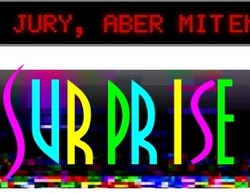http://hyperallergic.com/197190/in-a-new-residency-artists-make-work-by-volunteering/
"The six-week program, which is free, enlists artists to volunteer at least four hours a week at partner organizations while also participating in weekl development workshops" [working, for example, for homless people].
Which is free! Imagine you would pay for your volunteer work which at the same time makes a third party organisation adorn itself with what you do. Anyone can always volunteer for anything (we also volunteer, but completely unrelated to our art practice), without having to apply for a residency. Just take a look at LinkedIn at all the possibilities.
This sheds some light on the nature of the dead end art is facing by having promoted social practice to the academic canon. Artists are expected to work on continuously changing subject matters, required by the institutional grant, residency or exhibition project they apply to. It started with site specific work, which turned to work specific to the sites of choice of the institution and not of the artist. Today, almost any activity an institution wants to undertake can be labeled as social practice. Artist's proper work is optional.
The Jason Mass, the founder of The Artist Volunteer Center must have been confronted with these considerations before, being quoted
"[...] people can have very guarded opinions of artists being asked to give yet more of their time and talent away for free [...]. It is a reaction to a commercial art world that values artist’s time so long as it helps their bottom line"
We would argue that many artists would happily embrace an art world that commercially values their work (aka getting paid for your work), instead of volunteering for an institution under the disguise of a residency that offer possibilities one can easily create for oneself. Mass further states that
“[t]he AV Center is founded on the principle that art is most powerful when inspired by or attempting to establish a dialogue around social justice issues.”
This sets up a moral value system by which art is judged. It's unclear what "powerful" means in this context, or why social justice issues should somehow empower art. With a lack of aesthetic criteria by which socially engaged art could be evaluated (unlike traditional media such as painting and sculpture), we are stuck with moral guidelines. This is a slippery slope. It is far more difficult to disregard a project that might shed some light on the plight of immigrants (even though the project might prove to be completely ineffective and dilettantish) than it is to dismiss a sculpture, due to the former being based on a moral value system and not an aesthetic one . Instead of the opposition of ethics vs. aesthetics, what is needed in socially engaged art is an exploration of how content and form can undergo a symbiosis to strengthen its purposes and its considerations as an artistic practice.











 RSS Feed
RSS Feed
